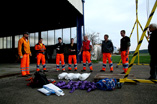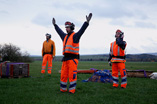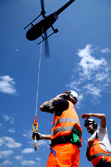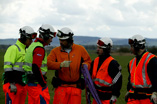Introduction:
Working with and around helicopters implies particular dangers, especially when performing so-called "aerial work", i.e. when loads are transported as external cargo attached to the helicopter.
Every aircraft service company is specifically structured and chooses its own form of organisation, depending on its goals, its executive staff, its geopolitical, topographical/geographical and economic situation. In order to achieve its goals, it uses methods and strategies which may clearly differ from those of fellow companies.
A common denominator of all "aerial workers" is the fact that any type and form of payload is slung by means of slinging equipment (round slings, chains, etc.), subsequently rigged to the lifting hook of a helicopter by means of load lifting attachments (ropes, hooks, buckets, nets), then hoisted and finally transported through the air from place A to place B.
All helicopter operators are subject to the same laws of physics. Aviation rules and regulations, although they might differ from nation to nation, are moving towards a European standardisation (EASA OPS). Regarding load lifting devices (LLD) and slinging equipment (SE), the legal situation and the rules of technology have already been standardised and described at a European level (EC machinery directive 2006/42/EC).
While the vocational education of pilots and technicians is controlled by detailed and extremely strict rules, the professional training of executive staff, sales personnel and marshallers is still not regulated. This is particularly surprising when considering that marshallers, as they work in close collaboration with the pilot and the task specialists, play an integral role in the successful performance of air transport.
Thus, especially in the field of external cargo transport, the quality of "aerial work" services relies in a crucial manner on the practical skills, the knowledge and the decision-making ability of the marshaller.








